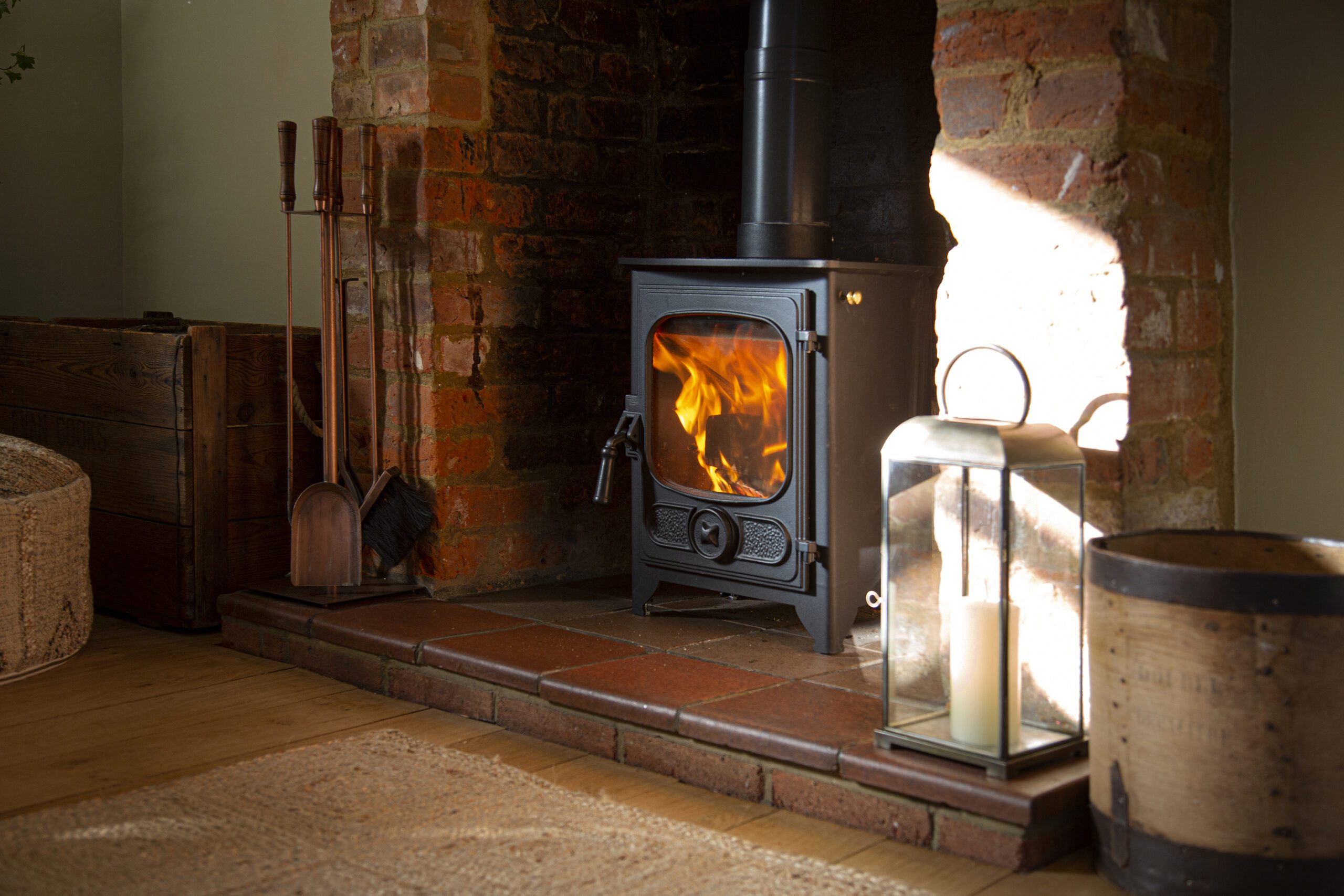Wood burning stoves have long been a staple in many homes, providing warmth and a cosy atmosphere during colder months. However, like any appliance, these stoves have a finite lifespan. Understanding when it’s time to replace your wood burning stove is essential for maintaining safety, efficiency, and comfort in your living space.
In this article, we delve into what to look out for when it’s time to bid farewell to your trusty old wood burning stove and welcome a newer, more efficient model into your home.
What is the Lifespan of a Wood Burning Stove?
On average, a well-maintained wood burning stove can last anywhere from 10 to 20 years and sometimes longer. The ingenuity behind Charnwood stoves lies in their modular design, allowing the majority of components to be replaced gradually as needed. However, it’s important to note that there might eventually come a time where the stove body itself reaches the end of its lifespan.
The primary determinant of a stove’s lifespan is the materials used in its construction. High-quality stoves crafted from durable materials such as cast iron or steel tend to have longer lifespans. Cast iron stoves are known for their robustness and ability to withstand high temperatures, while steel stoves are lighter and offer durability when properly cared for.
The longevity of a wood burning stove also depends on other factors, including its usage, maintenance and environmental factors, such as excessive moisture.
Also find out how a wood-burning stove can help reduce energy bills.
Are Newer Wood Burning Stoves More Efficient?
In recent years, advancements in stove technology have led to the development of more efficient and eco-friendly models. These newer stoves are designed to burn wood more efficiently, generating more heat with less fuel consumption and emitting fewer pollutants.
When considering the lifespan of your wood burning stove, it’s worth weighing the benefits of upgrading to a newer model that not only extends the longevity of the appliance but also offers enhanced performance and reduced environmental impact.
A new initiative from the EU, Ecodesign, has been brought in to improve the energy efficiency and environmental impact of all stoves, including wood burning stoves.
Signs That Your Wood Burning Stove Needs Replacing
Warping
One of the key indicators that it’s time to replace your wood burning stove is warping. Over time, intense heat exposure can cause the metal components of the stove to warp, affecting its structural integrity. Warping can lead to gaps in the seams, which may result in heat leakage, decreased efficiency, and even potential safety hazards.
Cracks and Splits
Cracks and splits are clear signals that your wood burning stove has reached the end of its useful life. Cracks, especially in the firebox or other critical areas, can allow smoke and fumes to escape into your living space, posing health risks. Regular maintenance and cleaning can help prevent cracks, but once it becomes widespread, replacement becomes the safer choice.
Broken Door
The door of a wood burning stove plays a critical role in ensuring the stove operates safely and efficiently. If you’re experiencing difficulty in closing or sealing the door properly, it could indicate a problem with the hinges, gaskets, or other components. A broken or ill-fitting door can lead to improper combustion, inefficient burning, and potential escape of harmful gases. You may be able to repair or replace the door, however, in some cases, it may be better to replace the stove altogether.
Increased Smoke Levels
An increase in smoke levels or the presence of smoke within your home when using the wood burning stove is a clear sign that something is amiss. It could be due to poor ventilation, a blocked chimney, or even an issue with the stove itself. Inefficient burning can lead to the production of more smoke, which not only decreases indoor air quality but also shows that the stove is not operating at its best.
More Fuel for Less Heat
As wood burning stoves age, their efficiency tends to decline. If you find that you’re using more fuel than usual to achieve the same level of heat output, it’s an indicator that your stove’s performance is diminishing. This situation not only puts a dent in your pocket due to increased wood consumption but also contributes to higher emissions. Investing in a newer, more efficient stove can result in substantial long-term savings on fuel costs.
Explore more about wood-burning stoves.
Why Choose Us?
As the stove approaches the end of its expected lifespan, it’s essential to pay close attention to signs of wear and deterioration. If efficiency drops, visible damage such as warping or cracks occur, or repairs become increasingly frequent and costly, it might be an indication that the stove has reached the end of its useful life.
Upgrading to a more modern model not only enhances the aesthetics of your living space but also contributes to reducing your carbon footprint. The increased efficiency of newer stoves means you’ll need less fuel to achieve the same or even better heat output, leading to significant long-term savings.
Charnwood has been committed to providing quality wood burning stoves since 1972 and we know all there is to know about getting the most out of wood burners and how to choose your next wood burning stove. If you have any questions about heating your home with a wood burning stove, please get in touch.

